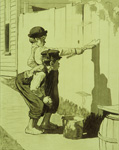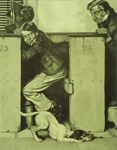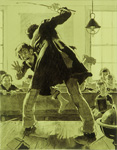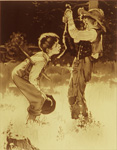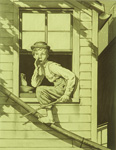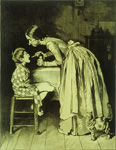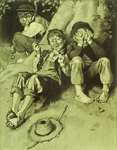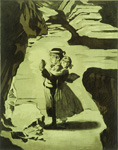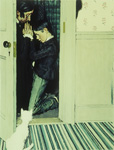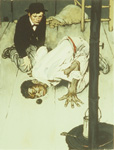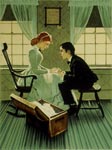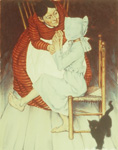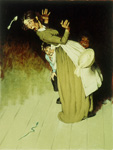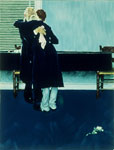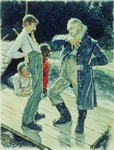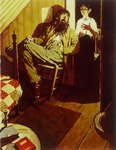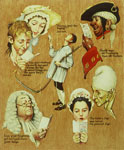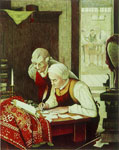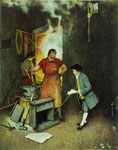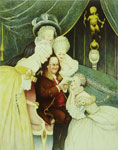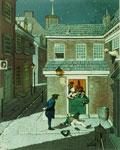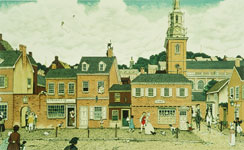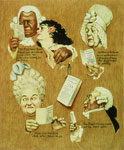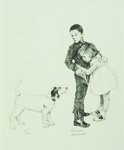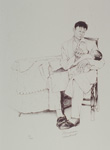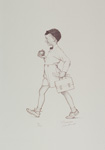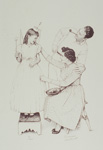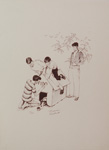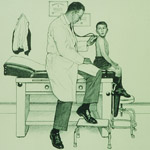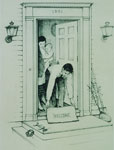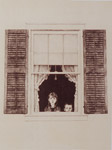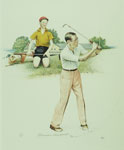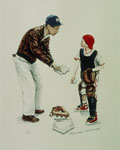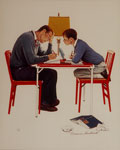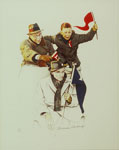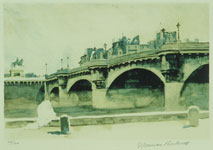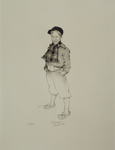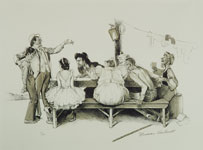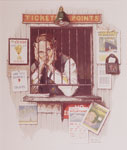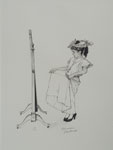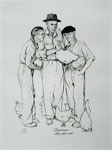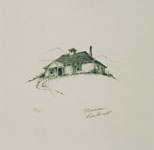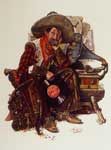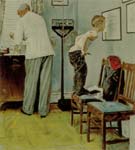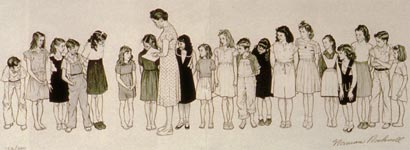History of the Powers Collection
During fall of 1969 Myrt and I were in Arts International Gallery on 5th Avenue in Seattle. We saw a signed lithograph by Norman Rockwell titled Spelling Bee. It depicted grade school kids in the 1920s or 1930s lined up with a teacher holding a book during a spelling bee contest. The picture reminded us of our own experience in school in the 1930’s. It looked so familiar that I could even see myself as the boy in the overalls standing at the end of the line. He was looking up the line in hopes that someone else would be sent to the bottom of the line. Norman Rockwell had enamored me since I sold the Saturday Evening Post in Waco, Texas in the 1930s. My doodling on book covers throughout grade school was my desire to be able to draw as he did. We heard that many of his oils had burned during a fire in his studio and he was encouraged to reproduce the same images as signed lithographs. We were placed on a list of collectors to receive advanced notice of new publications. Over the next several years, we purchased as many as we could afford, but only those that we recognized from the past, We did not think of our purchases as an investment in art, but rather to be enjoyed by our family.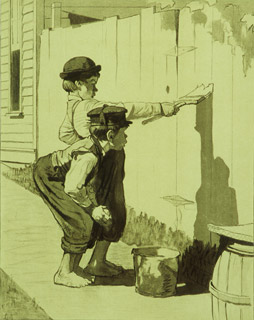 At one time, I telephoned Norman Rockwell in Stockbridge, Massachusetts. I was surprised that he answered his phone in his studio. His gravelly voice was distinctive. He was pleasant and friendly in conversation. I told him I was a collector and wanted to know what he was working on next.
Our collection soon became known among galleries from San Francisco to New York. For instance, when I entered the Circle Gallery in San Francisco and announced that I was Walt Powers from Cheney, Washington seeking Rockwells, they immediately recognized our collection. They wanted to know if I had Doctor and Doll, because they had a client who was willing to pay top dollar if I wanted to sell it. My professional travels during the 1970s took me to major cities throughout the U.S. where I visited many galleries seeking his works. By the time Norman Rockwell died in 1978, we had collected almost half of. signed lithographs. At this time we began to recognize that our collection was one of the largest in the country.
During the Spokane Exposition World’s Fair in 1974, Lincoln First Federal Savings and Loan contracted to display the collection of thirty lithographs that we owned at that time. The vice president of the bank wrote:
At one time, I telephoned Norman Rockwell in Stockbridge, Massachusetts. I was surprised that he answered his phone in his studio. His gravelly voice was distinctive. He was pleasant and friendly in conversation. I told him I was a collector and wanted to know what he was working on next.
Our collection soon became known among galleries from San Francisco to New York. For instance, when I entered the Circle Gallery in San Francisco and announced that I was Walt Powers from Cheney, Washington seeking Rockwells, they immediately recognized our collection. They wanted to know if I had Doctor and Doll, because they had a client who was willing to pay top dollar if I wanted to sell it. My professional travels during the 1970s took me to major cities throughout the U.S. where I visited many galleries seeking his works. By the time Norman Rockwell died in 1978, we had collected almost half of. signed lithographs. At this time we began to recognize that our collection was one of the largest in the country.
During the Spokane Exposition World’s Fair in 1974, Lincoln First Federal Savings and Loan contracted to display the collection of thirty lithographs that we owned at that time. The vice president of the bank wrote:
“The display was the most talked about exhibits in the history of the Lincoln Building. Nostalgia is ‘in’ today and pleasant pictures of a less complicated time brought pleasure to our customers and to our special visitors who came especially to see your collection.”
List of signed lithographs in the collection
- Spelling bee 122/200
- Tom Sawyer Portfolio of eight 12/200
- Huckleberry Finn Portfolio of eight AP
- Poor Richards Almanac of six 195/20
- The American Family Portfolio of eight 181/200
- The American Family portfolio of five 78/200
- School Days Portfolio of four 151/200
- The Bridge 62/200
- The House 140/200
- Dressing Up ( pencil) 190/200
- Dressing Up (ink) 85/200
- Jerry Rockwell 181/200
- Willie Goes to the Circus 111/200
- Doctor and Boy (Before the Shot) 32/200
- The Inventor 129/200
- Ticket Seller 12/200
- Three Farmers 12/200
- School House 32/200
- See America First 12/200
- Dreams of Long Ago 154/200
- Lincoln For the Defense 114/200
- At the Barber 195/2000
Museums where the collection has been exhibited
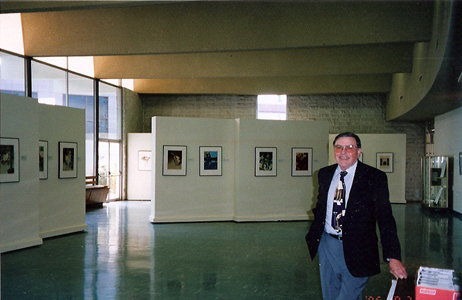 For about seven years,Eastern Washington University Art Touring Service and Smith Kramer Fine Arts Services of Kansas City booked our collection throughout the USA. Each venue was required to have environment controlled status with special lighting. Transport was by a New York Art Transfer Company with environmentally controlled air ride moving vans. The collection was booked on a seven week cycle and seven day transfer at these museums:
Joslyn Fine Arts Center, Torrance, California; Braithwaite Fine Arts Gallery, Southern Utah University; Muckenthaler Culture Center, Fullerton, California; University Art Collection at Texas A&M, College Station, Texas; Stokie Heritage Museum, Stokie, Illinois; Texarkana Regional Arts Council, Texarkana, Arkansas; Heritage Museum, Baker, Louisiana; Meadows Gallery, Denton, Texas; Octagon Center for the Arts, Ames, Iowa; Student Services, WSU, Richland, Washington; and Brigham City Museum and Gallery, Brigham, Utah.
The collection was exhibited at the following: Peninsula Fine Arts Center, Newport News, Virginia; Fresno Metropolitan Museum, Fresno, California; Dennos Museum Center, Traverse City, Michigan; Laurin Rogers Museum of Art, Laurel, Mississippi; Fayetteville Museum of Art, Fayetteville, North Carolina; R.W. Norton Art Gallery, Shreveport, Louisiana; Museum in The Community, Hurricane, West Virginia; Huntsville Museum of Art, Huntsville, Alabama; Hickory Museum of Art, Hickory, North Carolina; Amherst Museum, Amherst, New York; Bergstrom-Mahler Museum, Neenah, Wisconsin; Philharmonic Center For The Arts, Naples Florida; Midland Center For the Arts, Midland , Michigan; Fort Wayne Museum of Art, Fort Wayne, Indiana ; Museum of the Southwest, Midland, Texas; and the South Carolina State Museum, Charlston, North Carolina.
Upon their return to Cheney, the collection was secured in the Eastern Washington University Library Archives.
(excerpted from With Honor Cultivate the World)
For about seven years,Eastern Washington University Art Touring Service and Smith Kramer Fine Arts Services of Kansas City booked our collection throughout the USA. Each venue was required to have environment controlled status with special lighting. Transport was by a New York Art Transfer Company with environmentally controlled air ride moving vans. The collection was booked on a seven week cycle and seven day transfer at these museums:
Joslyn Fine Arts Center, Torrance, California; Braithwaite Fine Arts Gallery, Southern Utah University; Muckenthaler Culture Center, Fullerton, California; University Art Collection at Texas A&M, College Station, Texas; Stokie Heritage Museum, Stokie, Illinois; Texarkana Regional Arts Council, Texarkana, Arkansas; Heritage Museum, Baker, Louisiana; Meadows Gallery, Denton, Texas; Octagon Center for the Arts, Ames, Iowa; Student Services, WSU, Richland, Washington; and Brigham City Museum and Gallery, Brigham, Utah.
The collection was exhibited at the following: Peninsula Fine Arts Center, Newport News, Virginia; Fresno Metropolitan Museum, Fresno, California; Dennos Museum Center, Traverse City, Michigan; Laurin Rogers Museum of Art, Laurel, Mississippi; Fayetteville Museum of Art, Fayetteville, North Carolina; R.W. Norton Art Gallery, Shreveport, Louisiana; Museum in The Community, Hurricane, West Virginia; Huntsville Museum of Art, Huntsville, Alabama; Hickory Museum of Art, Hickory, North Carolina; Amherst Museum, Amherst, New York; Bergstrom-Mahler Museum, Neenah, Wisconsin; Philharmonic Center For The Arts, Naples Florida; Midland Center For the Arts, Midland , Michigan; Fort Wayne Museum of Art, Fort Wayne, Indiana ; Museum of the Southwest, Midland, Texas; and the South Carolina State Museum, Charlston, North Carolina.
Upon their return to Cheney, the collection was secured in the Eastern Washington University Library Archives.
(excerpted from With Honor Cultivate the World)
Gallery powered by Highslide
The Artist
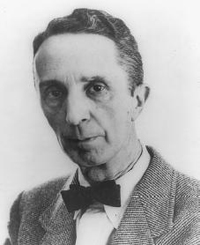
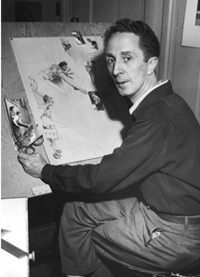
- Rockwell created an astonishing 321 covers for the Saturday Evening Post
- He raised $139.9 million for the World War I war effort through an exhibition of his legendary, patriotic series “The Four Freedoms.”
- Illustrated 50 Boy Scouts of America calendars (1925 – 1976).
- Rockwell’s stamp of Boy Scout Thorton Percival is one of the most popular U.S. stamps of all time, with a printing of over 139 million.
- In 1979 Liberia issued a limited-edition postage stamp set of 50 of Rockwell’s Boy Scout calendar paintings.
- Rockwell designed the 4-cent Boy Scouts of America 50th Anniversary stamp, issued February 8, 1960.
- Rockwell also designed the 5-cent City Mail Delivery commemorative stamp, issued October 26, 1963, to mark the 100th anniversary of free city mail delivery.
- In 1994 a commemorative 29-cent stamp was issued in his honor, featuring his famous “Triple Self-Portrait” painting.
- A.F.D. from University of Vermont, 1949
- A.F.D. from University of Massachusetts, 1961
- Doctor of Humanities from Middlebury College, 1954
- Presidential Freedom Medal, 1977
- Interfaith Award of the National Conference of Christians and Jews, 1961, for his Post cover of the “Golden Rule”.
